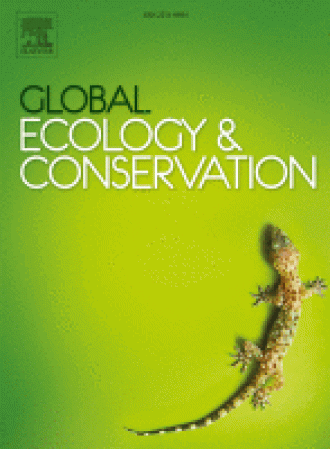Forage quality in grazing lawns and tall grasslands in the subtropical region of Nepal and implications for wild herbivores
Abstract
Subtropical grasslands interspersed in forests often present mosaics of tall grasslands and grazing lawns with a high variation in structure, biomass and nutrient concentration. However, the impact of such variation on forage quality is still poorly known. We quantified physical and chemical properties of grasses of grazing lawns and tall grasslands, interspersed in the forested region of Bardia National Park, Nepal during the hot-dry season. This area falls within Cwa-climate (Köppen-Geigen climate classification). We found that grasses in grazing lawns had an average bulk density of ~5400 g.m-3 whereas tall grasslands had an average bulk density of ~1000 g.m-3 only. Forage in grazing lawns was comprised of a higher percentage of green leaf (up to 60%) compared to tall grassland (up to 40%). Phosphorus levels in green leaves were below maintenance requirements of wild herbivores (especially for grazers and mixed feeders) on both grazing lawns and tall grasslands. However, average crude protein levels in green leaves from both the grazing lawns and tall grasslands could meet the herbivores maintenance requirement (~7%). Only green leaves on grazing lawns had crude protein levels sufficient enough (9.7%) to meet the requirements of herbivores for maintenance and gestation, though not for lactation. We conclude that, during the hot-dry season, grazing lawns provide forage with a higher quantity and quality than tall grasslands. Consequently, grazing lawns can make a significant contribution to the maintenance or even growth of the grassland dependent wild ungulate population, such as chital (Axis axis), a primary prey species of the endangered tiger (Panthera tigris) in Bardia National Park. The insight of this study will provide a basis for restoring grazing lawns for quality forage, and aid in the conservation and management of wild grazers and mixed feeders.

